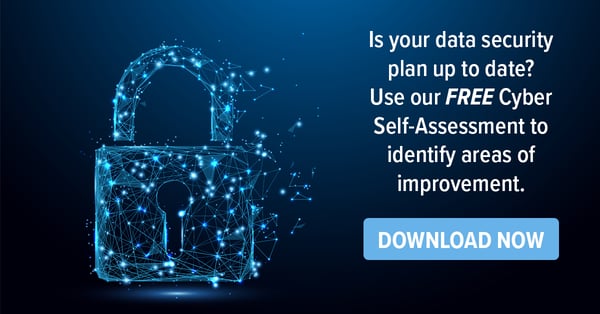How this peer-to-peer network could benefit your municipality
The year was 2008. Someone, or a group (the mystery is still alive and well) by the pseudonym Satoshi Nakamoto introduced a proposal that would end up becoming a huge phenomenon – Bitcoin. You probably regret not jumping on the bandwagon back then — but don’t worry, I’m right there with you.
The simple fact that 1 Bitcoin is roughly worth around $3,800 today would have anyone feeling a little envious, but that’s not why you’re here. It’s all about the hidden technology that underlies bitcoin – blockchain.
What is Blockchain?
Blockchain is used to record bitcoin transactions, and it’s at the heart of other virtual currencies, but it can also be used for other purposes that could prove worthy for municipalities.
Essentially, a blockchain is a decentralized, digital, public ledger that keeps track of transactions between participants. These transactions can be anything from tracking records, smart contracts that facilitate business affairs and even purchases made. These transactions are permanently stored in a “block” that is linked to and from respective blocks. Still a little lost? All of this tech talk can be confusing; thankfully Harvard Business Review identified the 5 basic principles behind the open source.
- Distributed database – Every user within the blockchain has access to the complete database. This also includes its complete history, allowing participants to verify transaction records.
- Peer-to-Peer communication – Each user, also known as a node, communicates directly with another user. All information and transactions between two parties is then sent directly to other nodes.
- Anonymous transparency – Although transactions are open and communicated with all other nodes within that blockchain, there’s still a sense of anonymity as users are given a “30-plus-character alphanumeric address” that identifies them. The option to remain anonymous is totally up to the user.
- Permanent records – When a transaction between parties is completed, it is entered into the database and all other user accounts are updated with the transaction. Because this “block” is then linked to every prior transaction, this record is irreversible.
- Computational logic – Users are able to set up algorithms and rules that will trigger transactions between participants.
Now that you've got the gist of how a blockchain works, you may be asking yourself what makes a new organizational method so exciting? There are many ways that a municipality, and the organizations and businesses within it, could benefit from blockchain technology. For example, in July, Delaware signed a $738 million contract with IBM to design a business filing system that is built on blockchain tech to track stocks and collateral assets in real-time.
More benefits associated with a blockchain include the following:
A Sense of Security
This particular network differs from what we’re used to seeing online. How so? Blockchain security methods involve encryption technology, making it harder for hackers to infiltrate this method compared to the old “username/password” system. That’s just the tip of the iceberg, so stay with me on this one.
The larger your blockchain, the more secure it is. According to CSO, in order for a hacker to compromise a blockchain, the attacker needs to compromise over 50 percent of the participants or blocks — and do so faster than new blocks are created. Still not sold? Let’s talk decentralization.
Decentralization
Because a blockchain is decentralized technology, the data being stored within the blocks is stored across its entire network. The exclusion of a central authority adds another sense of security due to the simple fact that there is no central point that is exposed to hackers and it puts the individual participants in control.
Cut Out the Middle Man
Another decentralization perk: there’s no need for banks, lawyers or accountants. Rather, this distributed ledger gives you the benefit of utilizing consensus protocols when validating transactions. Not only are you saving money, but you're also minimizing the human error that could come along with third-party involvement. What’s a consensus protocol?
A consensus protocol is an agreement between various devices across a network. Essentially, it's the rules that all participants within the blockchain must follow when communicating and completing transactions with each other.
So there it is, your quick lesson on blockchains. There are so many bits and pieces that go into this complex technology, and there is still much that needs to be understood. But why not get a head start by getting a better understanding on how the digital ledger works and keeping an eye out for cities that incorporate the emerging application? After all, the adoption of this technology could possibly move us closer to a more cost-efficient, secure and fast future that is the digital age.

Richie Almeida, Integrated Marketing Specialist
Richie is an avid movie goer with an addiction to Sour Patch Kids. If he isn’t at the movies, he is at the gym or on a hike trying to make up for his bad eating habits.
DISCLAIMER
The information contained in this blog post is intended for educational purposes only and is not intended to replace expert advice in connection with the topics presented. Glatfelter specifically disclaims any liability for any act or omission by any person or entity in connection with the preparation, use or implementation of plans, principles, concepts or information contained in this publication.
Glatfelter does not make any representation or warranty, expressed or implied, with respect to the results obtained by the use, adherence or implementation of the material contained in this publication. The implementation of the plans, principles, concepts or materials contained in this publication is not a guarantee that you will achieve a certain desired result. It is strongly recommended that you consult with a professional advisor, architect or other expert prior to the implementation of plans, principles, concepts or materials contained in this publication.
This blog post may contain the content of third parties and links to third party websites. Third party content and websites are owned and operated by an independent party over which Glatfelter has no control. Glatfelter makes no representation, warranty, or guarantee as to the accuracy, completeness, timeliness or reliability of any third party content. References to third party services, processes, products, or other information does not constitute or imply any endorsement, sponsorship or recommendation by Glatfelter, unless expressly stated otherwise.
Related posts
How you can help protect your most important asset: your people, and how to help them set up their insurance benefits so that they reflect their wishes.
Consider these best practices to avoid significant property damage, costly repairs and potential interruptions to your operations due to pipe freezing.
It’s crucial to understand the fundamentals of employment practices, why they’re important and ways you use them to help protect your organization and your most important asset, your...









Submit a Comment